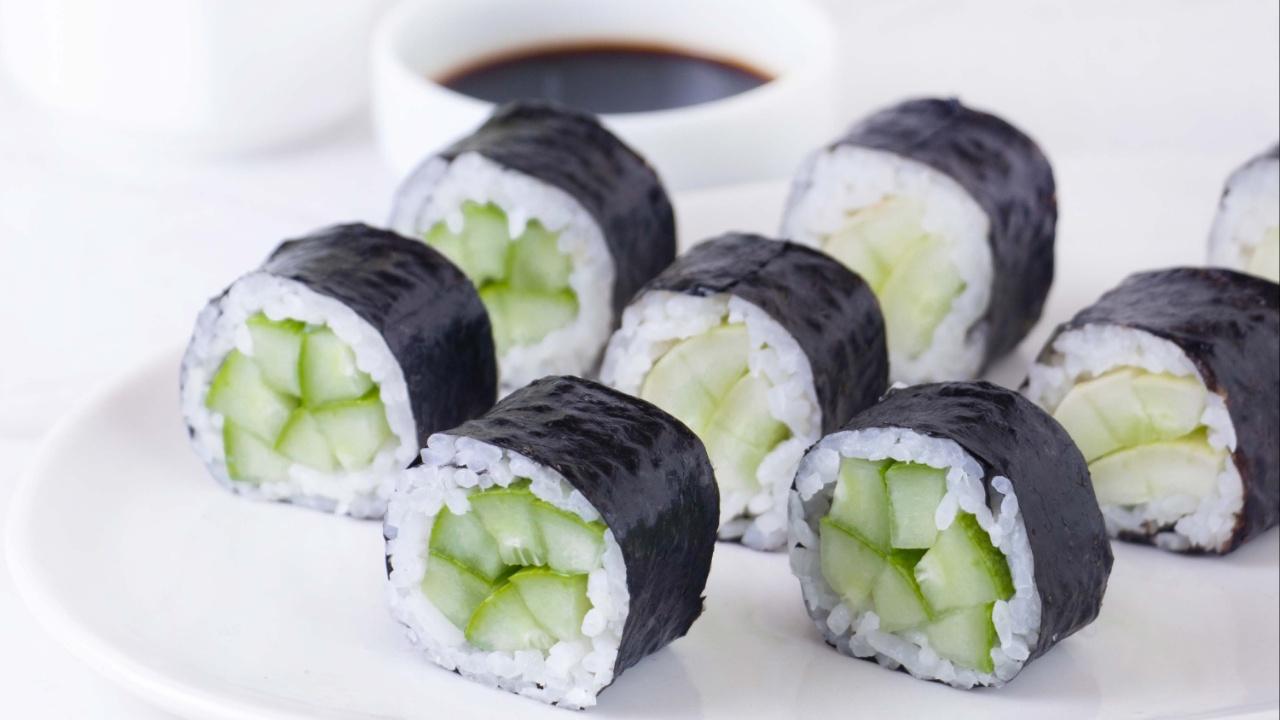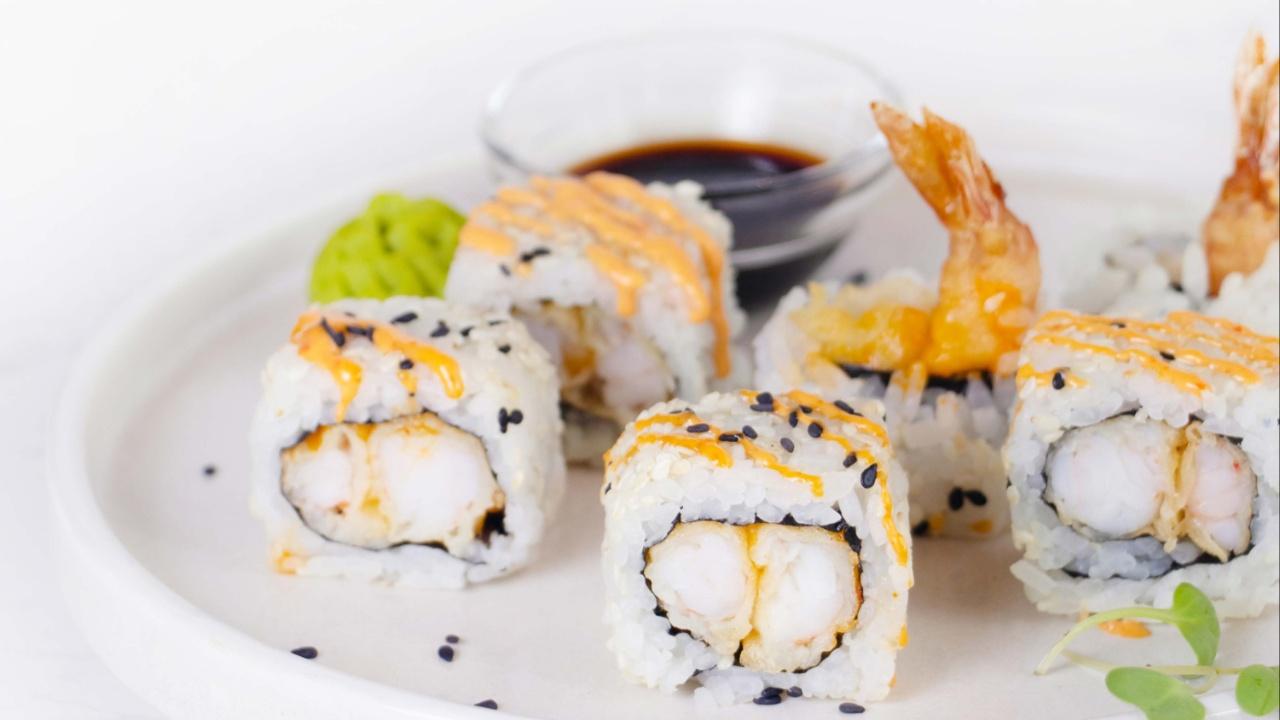International Sushi Day is on June 18. Renowned entrepreneur and sushi curator, Harry Hakuei Kosato speaks about sushi’s growing popularity across India, fusion flavours being offered and expert tips on how to make the Japanese dish at home

Harry Hakuei Kosato shares expert tips on how to make sushi at home. Photo courtesy: Sushi curator, Harry Hakuei Kosato
Japanese Cuisine Goodwill Ambassador, founder of Sushi and More and Kikkoman's India representative, Harry Hakuei Kosato dons many hats. Starting as one of the first importers of fine Japanese ingredients in India in 2007, he has since pioneered authentic affordable Japanese food in the home delivery and take-away segments through Sushi and More and helped support brands including Four Seasons Mumbai in launching its signature restaurant San: Qi.
ADVERTISEMENT
Asked to describe the growth and integration of Japanese cuisine in India's dynamic food and beverage scene, Kosato says, “It really is absolutely one of the biggest trends in the Indian culinary scene across metros and the regional cities. You can find sushi on the main street of Gangtok to the beach houses of Goa or the beautiful mountains of Leh Ladakh! Honestly, I think it is one of the most important trends of 2023, which is positively affecting other food trends in India.
The pan-India appeal
It is interesting how sushi — with raw fish as one of its central ingredients and perceived as bland — has permeated cities across India, be it metros or smaller towns. Considering how distinctive the flavours are from the traditional Indian palate, what's the reason behind its growing popularity? The culinary expert shares, “First of all, the accelerating rise of Japanese cuisine — especially sushi, and the growing appreciation and active use of unique Japanese food ingredients, is not only something unique to India, but India’s growth is part of a global crescendo of its popularity.”
He says how this desirability and growth of Japanese food cuisine is called ‘washoku’, which in 2013 was accorded UNESCO Intangible Cultural Heritage, stems from a few simple facts.
Kosato explains, “An obvious one is that of taste - umami - the Japanese word loosely translating as ‘deliciousness’ and is said to be the fifth savoury flavour - Japanese food is incredibly tasty because of high amount of umami flavours in all its dishes. Second is that of image - the health benefits associated with the Japanese population, where most live over 80 years of age. The perception of sushi being healthy has worked in its favour post-Covid-19. Quality ingredients and enjoying delicious food is indeed critical to a healthy happy life. Another reason is that sushi is exotic and trendy. The food comes from a far-away exotic land that few Indians comparatively have travelled to. The desirability of wanting to taste food from Japan in India, before or after they travel to the magical land where tradition, culture and technology meet undisputed true hospitality the Japanese way. And, for those who cannot yet go to Japan, they can enjoy its delicious food in India, is the mindset I believe.”
Indians and our love for fusion
Indians are known to infuse their flavours to global cuisines. We have extremely Indianised versions of Chinese, Italian and American foods that are modified to cater to the Indian palate and sushi has proven not to be an exception. “I think the Indianisation of sushi generally is less than that of other cuisines, overall. Because sushi is about simple flavourful not complex dishes using less spices than more. That being said, toogarashi or shichimi spices and other hot sauces like sriracha hot sauces have found its way into sushi dishes,” says Kosato.
He says of the universality of adapting global dishes: “There are extreme versions like tandoori sushi, but in Japan we also have Wafuu pasta which is like a Japanese dashi with seafood cooked to perfection. Italians may not call it Italian, but I have both Japanese and Italian foodies loving Wafuu pasta! A key thing to remember about food is that it evolves.”
Kosato concludes by recalling a recent incident of consuming one such fusion serving, “One dish I ate recently was a deep fried futomaki which was neither tasty nor remarkable. I told the general manager and chef as Japanese Cuisine Goodwill Ambassador, that dish was certainly not sushi in my opinion, but it may have been appreciated by the Indians with an experimental palate.”
Expert tips on making sushi at home
- Wash your hands and make them moist while you handle the steamed rice when rolling.
- Find space to keep all your different ingredients in place so that you can prepare with confidence.
- Using quality ingredients makes all the difference. I recommend using only Kikkoman Soy Sauce.
- Make sure you cook rice to perfection and then add sushi rice vinegar. Then let it cool.
- Ensure nori sheets are dry and crisp. If not, place front and back over a flame and make them better
- When you roll, roll gently not pressing too hard. You can also try temaki hand rolls, look it up on the internet and enjoy a variety of sushi types.
- Adding some Japanese mayonnaise or Sriracha sauce adds magic to any roll, variety is the name of the game.
Classic Cucumber roll

Sushi is not just about seafood, this classic cucumber roll is the perfect meal on a hot summer day. Photo courtesy: Sushi and more
Ingredients
Sushi Rice 200 gm
Nori Sheet 1 Sheet
Cucumber 1 pc
Wasabi 5 gm
Gari 10 gm
Kikkoman Soy Sauce 15 ml
Method
- Place the nori sheet on the mat.
- Slightly wet your hands and spread the sushi rice evenly on the sheet.
- Peel and deseed the cucumber, cut in to long strips.
- Arrange the cucumber strips neatly in the centre on the rice.
- Place both thumbs below the sushi mat while using the other fingers to hold the cucumber strips in place.
- Roll and shape using the sushi mat.
- Cut the roll into 8 even pieces.
- Serve alongside gari, wasabi and Kikkoman Soy Sauce.
Prawn Tempura Roll

The prawn tempura roll is a favourite among lovers of sushi. Photo courtesy: Sushi and more
Ingredients
Sushi Rice 110 gm
Nori Sheet 1 Sheet
Tempura fried prawns 4 pc
Roasted Sesame seeds 5 gm
Spicy Mayonnaise 30 gm
Wasabi 5 gm
Gari 10gm
Kikkoman Soy Sauce 15 ml
Method
- Fold and cut the nori sheet into half, and place one half of nori sheet on the mat.
- Slightly wet your hands and spread the sushi rice evenly on the sheet.
- Sprinkle roasted sesame seeds on the sushi rice.
- Flip the sheet, and spread the spicy mayonnaise on the nori sheet.
- Arrange the tempura fried prawns evenly over the mayonnaise.
- Place both thumbs below the sushi mat.
- Roll and shape using the sushi mat.
- Cut the roll into 8 even pieces.
- Drop small balls of spicy mayonnaise on the pieces of sushi and serve alongside gari, wasabi and Kikkoman Soy Sauce.
Also Read: From cinnamon to orange, this monsoon brew unique and original coffees
 Subscribe today by clicking the link and stay updated with the latest news!" Click here!
Subscribe today by clicking the link and stay updated with the latest news!" Click here!







